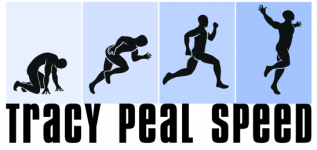Running Economy
In his recent post “Running Economy: Overrated and Misunderstood”, Steve Magness, exercise scientist and newest addition to the Nike Oregon Project team, bemoans the “sad state of a lot of physiology research out there” which has streamlined exceptional running performance into a neatly tied package of running economy (RE), maximal ventilatory intake (VO2max) and lactate metabolism threshold (LT). To him, these physiological markers are informative yet underwhelming. “There are no easy variables that can tell us how good of a runner you are or can be.” Really? So, what methods can we use to predict and evaluate running performance? How then, do we address the most cogent underlying question of What makes a great distance runner?
Magness attempts to answer this question by explaining that although “it would make sense that the ‘better’ ones running form, the more efficient” that person is, someone like Alberto Salazar (who had poor mechanics) was efficient based on the current scientific nomenclature. The problem, he states, is that RE is a complex variable, and that there are “three types of efficiencies that govern how [economical] a runner is in a whole body sense” – mechanical, physiological and neural. According to Magness, “some parts of you will be very efficient while others won’t.” In this way, RE “reflects the sum of all those parts.”
There is some truth to what Magness says. In “Web of Life”, Fritjof Capra reveals that in the systems thinking view, “the essential properties of an organism, or living system, are the properties of the whole, which none of the parts have. [These properties] arise from the interactions and relationships among the parts.” By defining RE as the relationship between several types of efficiencies, Magness owns some understanding of the the parts contributing to the whole. However, states Capra, “the belief that in every complex system the behavior of the whole can be understood entirely from the properties of its part” is the central idea of the reductionist approach of modern movement science. So Magness is just as guilty as the scientists he criticizes – by reducing RE to smaller parts and missing the point that the properties (of efficiency in this case) are destroyed “when the system is dissociated, either physically or theoretically, into isolated elements.”
It was biologist Joseph Woodger in Biological Principles, 1936 (cited by Capra), among others, who emphasized that “the key characteristics of the organization of living organisms was its hierarchical nature.” In other words, there are multileveled systems within systems. In humans, every step we take displays the connectedness between balance and falling, support and motion, thought and action. Economical running form relates to our ability to interact with our gravitational environment. Our bodies are already attuned to the slightest fluctuations. All we need to improve is a better sense of our “loss” of bodyweight when falling forward during the gait cycle.
It’s not about the body becoming more efficient “at sending the neural signals from the brain to the muscles,” as Magness argues. The brain does not determine “what muscle fiber to fire to do a certain movement.” Muscles have pre-determined functions as agonists/antagonists. It’s not our job to tell them what to do. This is handled by the precise, dense network of interactions that criss-crosses anatomical, physiological, psychological, emotional and biomechanics barriers. We are still discovering how to predict and define the potential of human performance. Capra summarizes that “all scientific concepts and theories are limited and approximate.” Science can never provide any complete and definitive understanding.”







